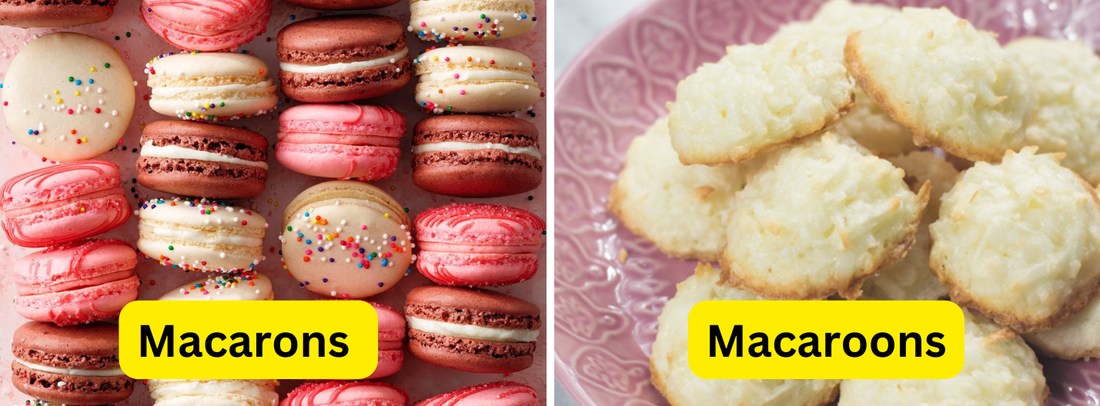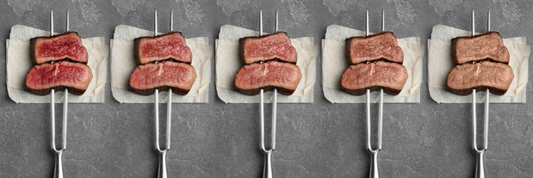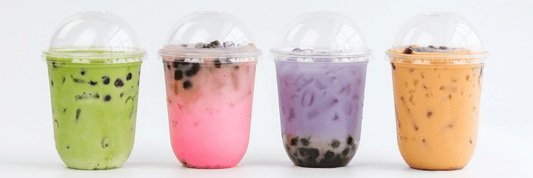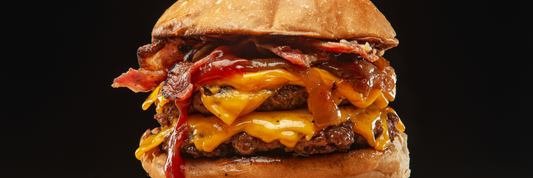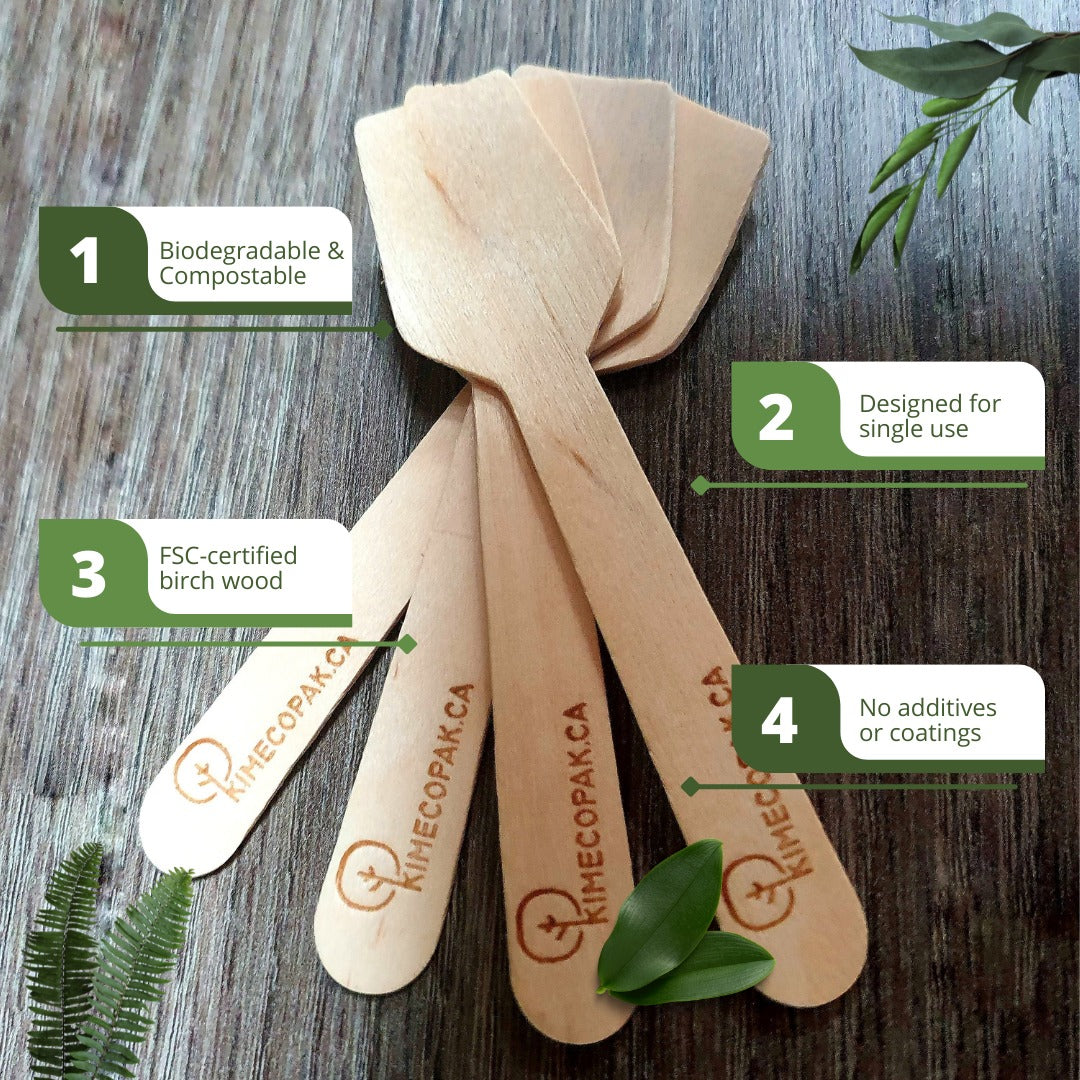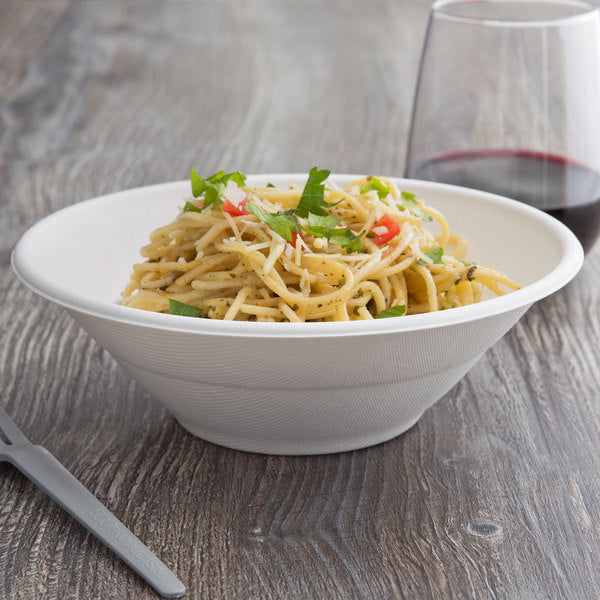Macaron and macaroon have distinct appearances and ingredients, however, the similar spelling of these two treats often leads to confusion. The article below will help you know how to distinguish between macarons vs macaroons.
- Types of Donuts to Know
- Guide for New Bakers: The Difference Between Creme Fraiche, Sour Cream, Mascarpone, and Cream Cheese
Macarons Overview
What is a Macaron?
A macaron is a type of dainty French cookie that is chewy and has a smooth, ruffled edge. It's a confectionary masterpiece that takes precision and care to make. The cookie's distinct shape and flavor have made it a popular treat among foodies worldwide.
The macaron dates back to the 18th century, when it was first known as the "Italian meringue cookie." The recipe evolved throughout time, and the macaron has become a French pastry staple.

Flavor profile of Macarons
Macarons offer a delightful range of flavors, thanks to the versatile filling options. Some popular flavor combinations include:
- Classic Chocolate: Dark, milk, or white chocolate ganache for a rich and decadent treat.
- Fruity Delights: Strawberry, raspberry, blueberry, or lemon jam or buttercream for a tangy and sweet taste.
- Nutty Indulgences: Pistachio, hazelnut, or almond praline for a nutty and crunchy texture.
- Spicy Surprises: Lavender, rose, or cardamom for a unique and aromatic flavor.
- Exotic Explorations: Matcha green tea, chai spice, or passionfruit for a bold and adventurous taste.
What are Macarons Made of?
The key ingredients in a macaron are:
- Almond flour: This provides the cookie with its characteristic chewy texture and delicate flavor.
- Egg whites: These are essential for creating the meringue-like base of the macaron, which gives it its airy and light texture.
- Powdered sugar: This adds sweetness and helps to bind the ingredients together.
- Food coloring: This is often used to create colorful and visually appealing macarons.
In the next section, explore macaroons before going deeper to know the difference between macarons vs macaroons.
Macaroons Overview
What Is a Macaroon?
A macaroon is a drop cookie made with shredded coconut. It's known for its chewy texture, sweet taste, and distinctive appearance. Macaroons are often coated in sugar or coconut flakes for a delightful crunch.
The process of making macaroons involves mixing coconut, sugar, egg whites, and flavorings together to form a dough. The dough is then dropped onto a baking sheet and baked until golden brown.

Flavor Profile of Macaroons
Macaroons typically have a sweet and nutty flavor, thanks to the coconut used in their preparation. However, you can find various flavor variations, such as:
- Classic Coconut: The traditional flavor with a hint of sweetness.
- Chocolate: A rich and decadent combination of coconut and chocolate.
- Almond: A nutty twist with the addition of almond extract.
- Lemon: A tangy and refreshing flavor.
- Vanilla: A classic and versatile flavor.
What Are Macaroons Made of?
The primary ingredients in a macaron are:
- Coconut: The main ingredient that provides the chewy texture and nutty flavor.
- Sugar: Adds sweetness to the cookie.
- Egg whites: Help to bind the ingredients together and create the chewy texture.
- Flavorings: Such as vanilla, almond, lemon, spice blends, or tropical fruit extracts, to enhance the taste.
Macaroons are a delicious and versatile treat that can be enjoyed on their own or as part of a dessert platter. They are a popular choice for tea parties, picnics, and other special occasions.
Differences Between Macarons vs Macaroons
Now that we've explored the basics of macarons vs macaroons, let's delve deeper into their key differences. Macarons vs macaroons are distinguished by these characteristics
Ingredients:
- Macarons: Made primarily with almond flour, egg whites, powdered sugar, and food coloring. The almond flour provides a delicate flavor and chewy texture.
- Macaroons: Made primarily with coconut, sugar, egg whites, and flavorings. The coconut gives macaroons their characteristic chewy texture and nutty flavor.
Texture:
- Macarons: Known for their delicate and chewy texture, similar to a meringue. The almond flour and egg whites contribute to this texture.
- Macaroons: Also have a chewy texture, but it's slightly crunchier due to the coconut flakes. The egg whites help to bind the ingredients together and create this texture.
Appearance:
- Macarons: Typically, round with a smooth top and a ruffled edge. The ruffled edge is a result of the meringue-like batter being piped onto a baking sheet.
- Macaroons: Often rounded or irregular in shape. They are typically dropped onto a baking sheet, resulting in a less uniform appearance.
Filling:
- Macarons: Frequently filled with a sweet ganache, buttercream, or jam. The filling is sandwiched between two macaron shells.
- Macaroons: Typically, not filled. They are often enjoyed on their own or coated in sugar or coconut flakes.
These key differences make macarons vs macaroons unique treats with their own distinct appeal.
Conclusion
Macarons vs macaroons, while often confused, are distinct treats. Macarons, with their almond flour base and vibrant colors, are a French confectionery masterpiece. Macaroons, on the other hand, offer a chewy coconut delight. Whether you prefer the refined elegance of macarons or the comforting sweetness of macaroons, both cookies provide a delightful experience. Choos the one that best suits your taste preferences.

